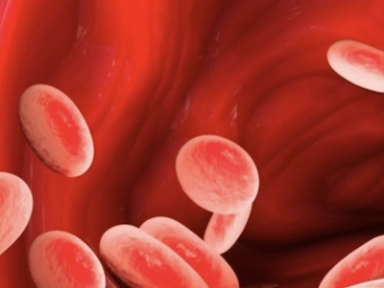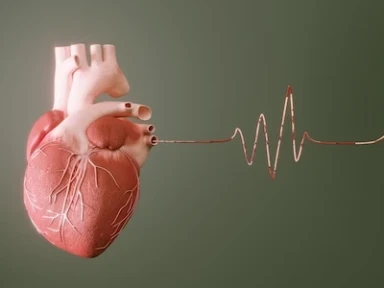LDL-C in the management of high cardiovascular risk, changing the paradigm for prevention
This satellite symposium highlights the gap between lipid-lowering guidelines and implementation and focuses on the paradigm for prevention of CV diseases.
Key Takeaway
- For ASCVD patients, particularly post-MI patients, the treatment paradigm should be changed from using a high-intensity statin monotherapy to that focusing on high-intensity lipid-lowering therapies.
- As per the author, patients with an MI already on an oral agent should probably have a PCSK9 inhibitor instituted before hospital discharge.
- Every patient should be discharged on a statin and ezetimibe, and then after 6 to 10 weeks, if LDL-C goals are not achieved, treatment can be personalized and intensified (based on need, cost, and availability), so that most patients achieve the goals.
Key Highlights
- Manifestation of CV disease is an interaction between inherited genetic vulnerability and can develop adaptive or maladaptive responses to a lifetime of cumulative exposure.
- As per this concept, if the average age at which risk factors are changed is 50–60 years, the patient misses exposure for many years, and therefore, much aggressive intervention is needed earlier in life.
- People with established CV disease will have a greater underlying burden of atheroma.
- Atherosclerosis is developed over many years; therefore, individuals who develop acute presentations have a greater burden of atheroma.
- When lipid lowering is considered, most trials have focused on treatment and absolute reduction; the time for reduction has not been considered.
- Genetic data can provide a lot of insights; for example, a third of a millimole reduction achieved over 50 years has similar benefits as somebody treated later in life, with a 1 mmol reduction.
- In the 2019 ESC/EAS guidelines, the recommended LDL-C goal of 1.4 mmol/L for patients at very high risk is reliant on statin-based monotherapy. However, achieving LDL-C with one treatment is mathematically impossible.
- For patients with LDL >2.8 mmol/L, it is mathematically impossible to get to these treatment goals with monotherapy.
- DA VINCI study: In Europe, the majority of patients were prescribed statin-based monotherapy (84%); combination therapy like ezetimibe and PCSK9 inhibitor were given to 9% and 1% of patients, respectively.
- High-intensity statin was prescribed more in ASCVD patient population.
- 2016/2019 goal attainment in patients with established ASCVD:
- The goal of 1.8 mmol/L can be achieved with high doses of statins or the use of combination therapy with ezetimibe or with mAb.
- For the goal of 1.4 mmol/L, 40% of patients will get to goal with high-intensity statin or stain and ezetimibe. PCSK9 inhibitor or a third oral agent should be initiated for those 60% of patients not at goal.
- Data from SWEDEHEART studies showed that patients with MI when given appropriate level of statins were still above the LDL-C goal.
- Ezetimibe should be considered to move these patients toward achieving the lower target of 1.4 mmol/L.
- Another analysis from SWEDEHEART showed that about one quarter of patients with MI had no intensification of their therapy; these patients were often those with history of CV disease and comorbidities but with no change in LLT.
- About 50% of the patients with MI had LDL-Cs between 2.3–3.8 mmol/L.
- These patients did not have dyslipidemia but had high LDL-C, and it was observed that lower LDL-C was achieved with statin-based monotherapy; for achieving goals beyond this, the combination therapy should be considered.
- Which type of patients receive PCSK9 inhibitors in Europe?
- Only patients with high baseline LDL-C levels are being prescribed mAbs. The most likely way these patients qualify for the drug is if they are statin intolerant.
- Lowering the reimbursement threshold would mean that more patients would be treated with a PCSK9 inhibitor and more patients would get to treatment goal.
ASCVD, atherosclerotic cardiovascular disease; CR, cardiac rehabilitation; CV, cardiovascular; EAS, European Atherosclerosis Society; ESC, European Society of Cardiology; LDL-C, low-density lipoprotein-cholesterol; mAb, monoclonal antibody; MI, myocardial infarction; PCSK9, proprotein convertase subtilisin/kexin-9. class.
1. Ray KK. LDL-C in the management of high CV risk – changing the paradigm for prevention. Presented at the European Society of Cardiology (ESC) conference on August 27, 2021.
2. Ray KK, Molemans B, Schoonen WM, Giovas P, Bray S, Kiru G, et al. EU-wide cross-sectional observational study of lipid-modifying therapy use in secondary and primary care: the DA VINCI study. Eur J Prev Cardiol. 2021;28(11):1279–1289. doi: 10.1093/eurjpc/zwaa047. PMID: 33580789.




.webp/jcr:content/jcr_content%20(9).webp)